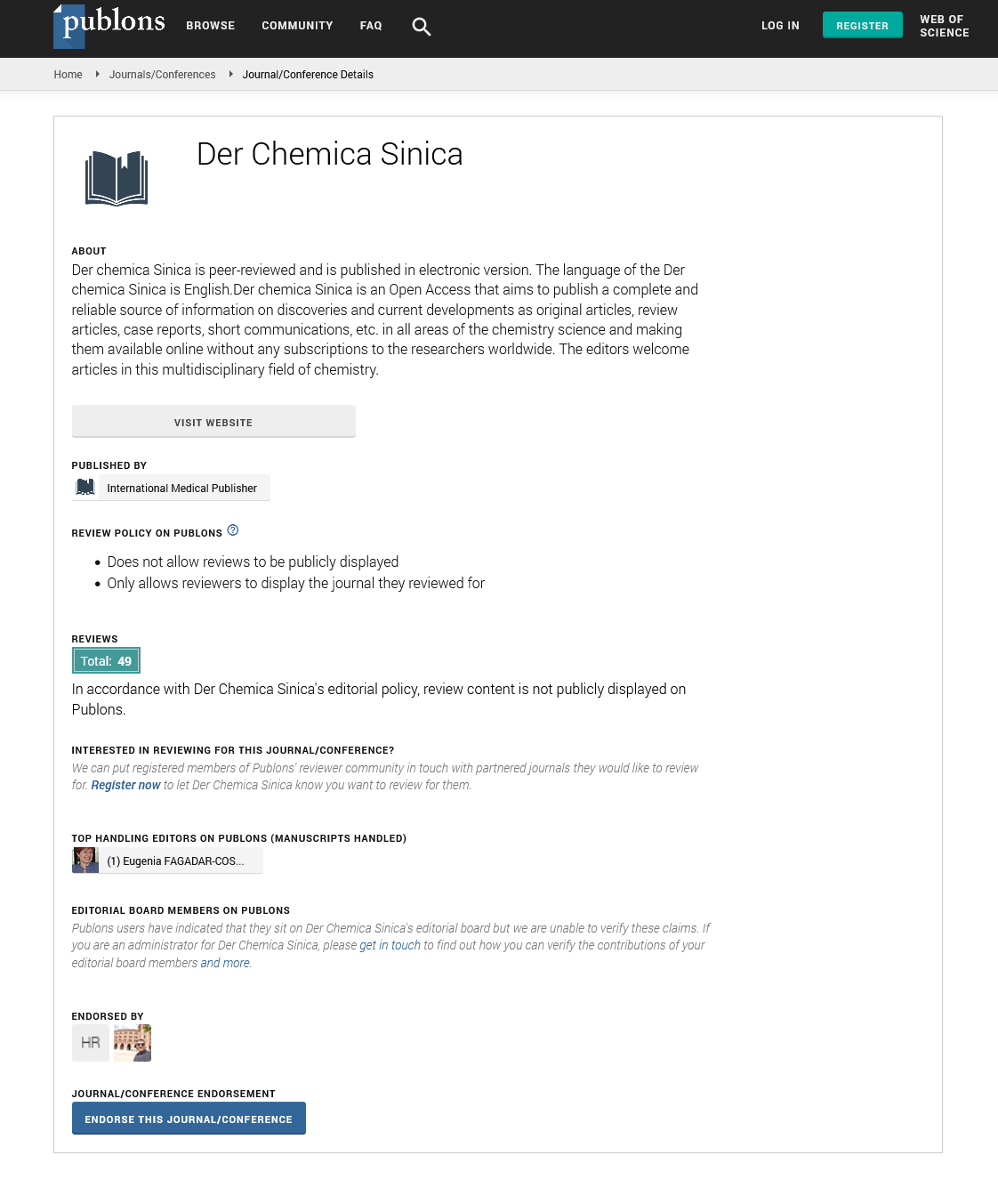ISSN : 0976-8505
Der Chemica Sinica
Abstract
Estimation of Firing Temperature of Some Ancient potteries of Tamilnadu, India by FT-IR spectroscopic technique
The firing temperature of the ancient pottery provides basics for understanding many aspects of ancient technology such as manufacturing techniques and functional relationships between specific resource manufacturing combinations. The firing temperature of ancient a pottery is based primarily on changes of physical characteristics occurring when clay minerals are heated. In the present work, the ancient potteries are collected from the Nilgiri and Perumbair of Tamilnadu is subjected to IR studies for firing temperature measurement. The mineral composition and firing condition are inferred from the FT-IR spectrum. To estimate the upper limit of firing temperature of pottery fragments, the specimens were refried at different temperature and the FT-IR spectrum was recorded. The interpretation of results is made from the IR characteristics absorption bands. Spectroscopic results indicated that these potteries were refried to less than 900 ºC
Author(s): R. Ravisankara , S. Kirubab, A. Naseerutheenc, A. Chandrasekarand, C. Maheswarane
Abstract | PDF
Share This Article
Google Scholar citation report
Citations : 6019
Der Chemica Sinica received 6019 citations as per Google Scholar report
Der Chemica Sinica peer review process verified at publons
Abstracted/Indexed in
- Google Scholar
- Open J Gate
- Genamics JournalSeek
- China National Knowledge Infrastructure (CNKI)
- Directory of Research Journal Indexing (DRJI)
- Publons
- MIAR
- International Committee of Medical Journal Editors (ICMJE)
- Serials Union Catalogue (SUNCAT)
- Geneva Foundation for Medical Education and Research
- Secret Search Engine Labs
- Euro Pub
- CAS (Chemical Abstracting Services)
- University of Barcelona
Open Access Journals
- Aquaculture & Veterinary Science
- Chemistry & Chemical Sciences
- Clinical Sciences
- Engineering
- General Science
- Genetics & Molecular Biology
- Health Care & Nursing
- Immunology & Microbiology
- Materials Science
- Mathematics & Physics
- Medical Sciences
- Neurology & Psychiatry
- Oncology & Cancer Science
- Pharmaceutical Sciences
